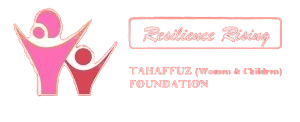
Introduction
The National Commission for Child Welfare and Development (NCCWD) was established on 16th December 1979 by the Government through a resolution being effective from 1st January 1980, which was amended from time to time finally in 1991 under the then Ministry of Health and Social Welfare as an advisory body to the Government of Pakistan on matters related to Children. After devolution of the Ministry of Social Welfare and Special Education, the NCCWD was transferred to the Capital Administration & Development Division to function at the ICT level. Later on, it was placed with the Ministry of Human Rights with the approval of the Prime Minster w.e.f. 2nd December, 2011. Now it is working under the ambit of Ministry of Human Rights. The NCCWD is responsible to coordinate, monitor & facilitate implementation of the United Nations’ Convention on the Rights of the Child (UNCRC) and other national/ international obligations. The NCCWD also submits mandatory Periodic Reports on implementation of the UNCRC to the UN Committee on the Rights of the Child, Geneva & other quarters.
Vision of the NCCWD
To create child friendly society that places the children at the centre of development, recognizes their individuality, respects and values their voices, observes their best interest in every sphere of life and protects them from violence, abuse and exploitation.
Objectives
- To assess the impact of the constitutional, legal and administrative provisions having bearing on welfare and development of children and suggest measures to provide full opportunities for their complete growth.
- To suggest amendments and additions to the Constitution and national laws, where feasible so as to bring them into harmony with the United Nations Convention on the Rights of the Child.
- To formulate a National Policy for Child Welfare and Development in the Country.
- To formulate legislation to deter the child abuse in all its forms, including physical violence, child mutilation, exposure to drugs, child labor and protection to children who are handicapped (mentally or physically) or otherwise in need of social protection and services.
The Constitution of Pakistan.
Article 25(1) of the Pakistani Constitution states that “all citizens are equal before law and entitled to equal protection of law”. Article 37(a) of the Convention states that “no child shall be subjected to torture or other cruel, inhuman or degrading treatment or punishment”. Pakistani laws do not afford a sufficient protection against torture and other ill-treatment. This legislative lack is among the main causes of many cases of torture reported in Pakistan. Children are common victims of these violations. The constitution’s Article 25(A) (which deals with the right to education), Article 11(3) (which forbids employment of children) and the Pakistan Penal Code’s section 82 (which grants blanket immunity to children below a certain age) all have different upper limits for the age of children. Many social indicators give a measure of the progress achieved by the Islamic Republic of Pakistan regarding Children’s Rights since its independence in 1947. Access to health services, education and life expectancy has improved as the infant mortality rate and illiteracy have declined. Despite everything, the full realization of Children’s Rights is still going to demand enormous time and effort.
International and Regional Instruments of Child Rights
- United Nations Conventions on the rights of the Child (UNCRC).
- Optional Protocol to the UNCRC on Sale of Children, Child Prostitution &Child Pornography.
- SAARC Convention on Preventing & Combating Trafficking in Women and Children for Prostitution, 2002
- SAARC Convention on Regional Arrangements for the Promotion of Child Welfare in South Asia
- Stockholm Declaration and Agenda for Action, 1996 against Commercial Sexual Exploitation of Children,
- South to South Cooperation on Child Rights 2010,
- The Yokohama Global Commitment , 2001 against Commercial Sexual Exploitation of Children,
- Third World Congress against Sexual Exploitation of Children and Adolescents RIO DE JANEIRO, 25 – 28 NOVEMBER 2008.
- South Asia Initiative to End Violence Against Children (SAIEVAC).




Leave a Reply